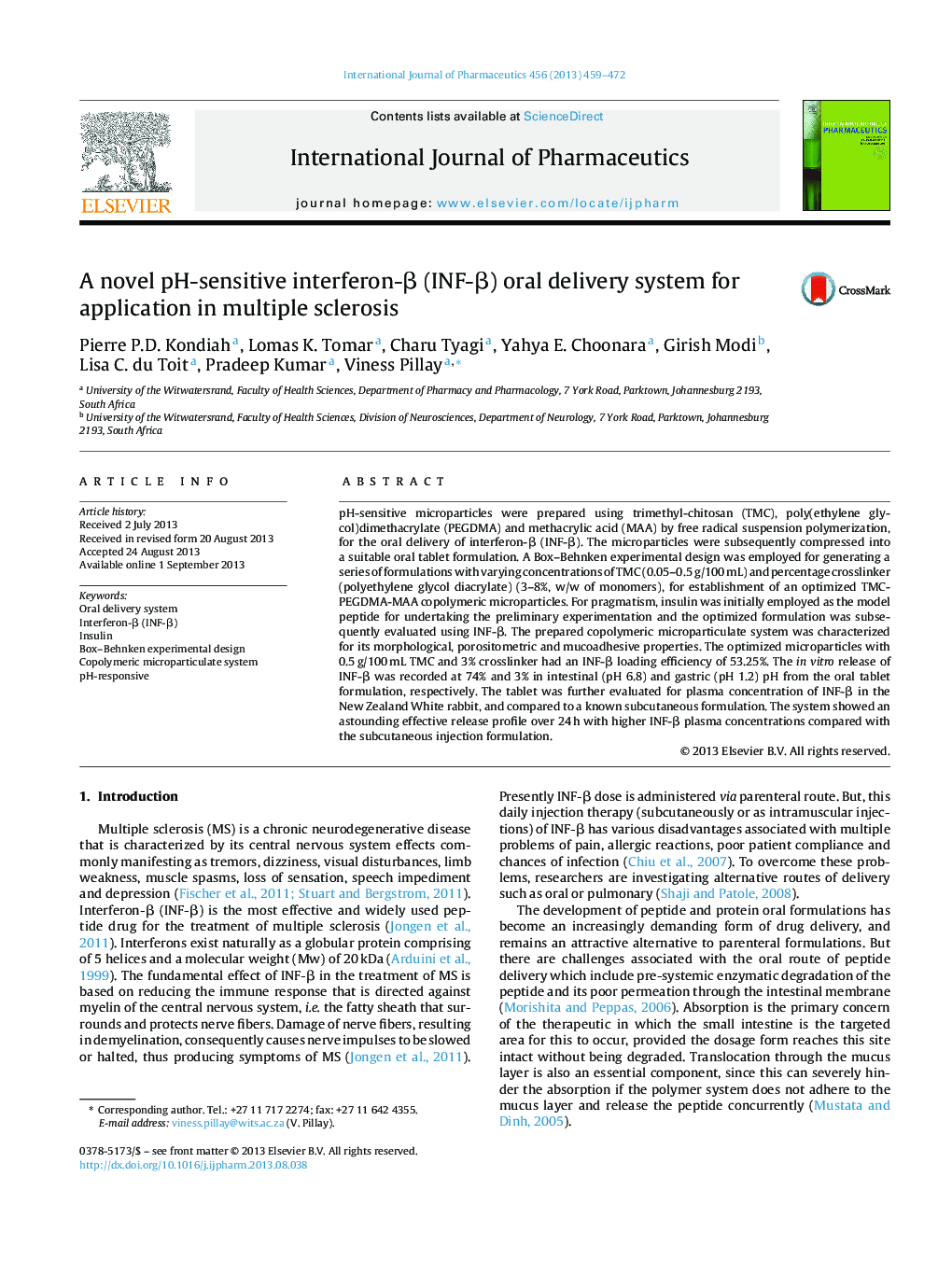| Article ID | Journal | Published Year | Pages | File Type |
|---|---|---|---|---|
| 2502143 | International Journal of Pharmaceutics | 2013 | 14 Pages |
pH-sensitive microparticles were prepared using trimethyl-chitosan (TMC), poly(ethylene glycol)dimethacrylate (PEGDMA) and methacrylic acid (MAA) by free radical suspension polymerization, for the oral delivery of interferon-β (INF-β). The microparticles were subsequently compressed into a suitable oral tablet formulation. A Box–Behnken experimental design was employed for generating a series of formulations with varying concentrations of TMC (0.05–0.5 g/100 mL) and percentage crosslinker (polyethylene glycol diacrylate) (3–8%, w/w of monomers), for establishment of an optimized TMC-PEGDMA-MAA copolymeric microparticles. For pragmatism, insulin was initially employed as the model peptide for undertaking the preliminary experimentation and the optimized formulation was subsequently evaluated using INF-β. The prepared copolymeric microparticulate system was characterized for its morphological, porositometric and mucoadhesive properties. The optimized microparticles with 0.5 g/100 mL TMC and 3% crosslinker had an INF-β loading efficiency of 53.25%. The in vitro release of INF-β was recorded at 74% and 3% in intestinal (pH 6.8) and gastric (pH 1.2) pH from the oral tablet formulation, respectively. The tablet was further evaluated for plasma concentration of INF-β in the New Zealand White rabbit, and compared to a known subcutaneous formulation. The system showed an astounding effective release profile over 24 h with higher INF-β plasma concentrations compared with the subcutaneous injection formulation.
Graphical abstractFigure optionsDownload full-size imageDownload high-quality image (184 K)Download as PowerPoint slide
